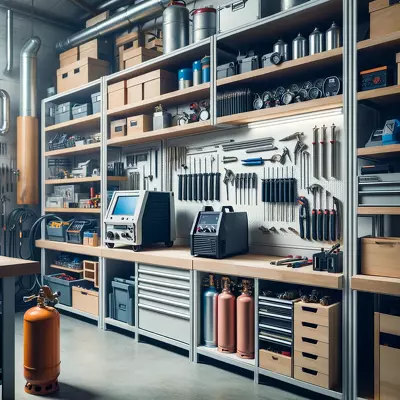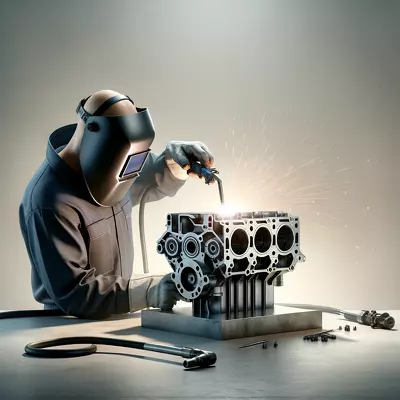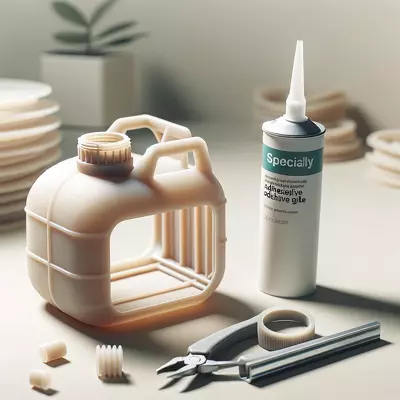Ensuring Safety and Efficiency: Where Should Welding Equipment Be Stored for Optimal Performance?

Proper storage of welding equipment is crucial for safety and efficiency. Knowing where welding equipment should be stored helps prevent accidents and extends the lifespan of the tools. This article covers the best practices for storing welding equipment, ensuring a safe and organized workspace. Whether you are a professional welder or a hobbyist, these tips will help keep your tools in top condition and ready for use.
I. Introduction
A. Importance of Proper Storage for Welding Equipment
Storing welding equipment correctly is vital for maintaining a safe and efficient work environment. Proper storage prevents accidents, extends the lifespan of tools, and ensures that equipment is readily available when needed. Whether used in professional settings or for personal projects, welding equipment must be stored in a way that minimizes hazards and keeps everything organized.
B. Overview of the Article
This article provides comprehensive guidelines on the best practices for storing welding equipment. From addressing safety considerations to exploring various indoor and outdoor storage solutions, the goal is to offer practical tips for maintaining an organized and safe workspace.
II. Safety Considerations
A. Fire Hazards
Welding equipment can be a significant fire risk if not stored properly. Flammable materials and gases must be kept in designated, fire-resistant containers away from ignition sources. Ensuring a clear, clutter-free area around the storage site reduces the risk of accidental fires.
B. Ventilation Requirements
Adequate ventilation is essential when storing welding equipment, especially gas cylinders. Proper airflow prevents the build-up of potentially harmful fumes and gases, reducing the risk of explosions and health hazards. Well-ventilated storage areas also help maintain air quality, protecting workers from inhaling toxic substances.
C. Personal Protective Equipment (PPE) Storage
Storing personal protective equipment (PPE) properly is as important as storing welding tools. PPE should be kept in a clean, dry place to prevent contamination and damage. Designated lockers or cabinets are ideal for keeping helmets, gloves, and other protective gear organized and ready for use.
III. Indoor Storage Solutions
A. Shelving Units
Shelving units provide a simple and effective way to organize welding tools and accessories. Sturdy metal shelves can hold heavy equipment, keeping it off the floor and reducing clutter. Adjustable shelves offer flexibility for storing items of various sizes.
B. Storage Cabinets
Storage cabinets with lockable doors are excellent for securing valuable welding equipment. Cabinets protect tools from dust and debris, ensuring they remain in good condition. Lockable options also add an extra layer of security against theft.
C. Tool Racks
Tool racks are useful for storing smaller welding tools and accessories. Wall-mounted racks save space and keep frequently used items within easy reach. This setup promotes efficiency and helps maintain an orderly workspace.
IV. Outdoor Storage Solutions
A. Weatherproof Containers
Weatherproof containers are essential for storing welding equipment outdoors. These containers protect tools from rain, snow, and extreme temperatures. Durable, sealed containers ensure that equipment remains dry and free from weather-related damage.
B. Secure Sheds
A dedicated shed provides ample space for securely storing welding equipment. Sheds should be constructed from sturdy materials and equipped with locks to prevent unauthorized access. Organizing tools inside the shed with shelves and racks maximize space and efficiency.
C. Covered Workstations
Covered workstations offer a practical solution for outdoor storage and use. These workstations protect equipment from the elements while providing a designated area for welding tasks. Ensuring the workstation is sheltered and well-organized enhances both safety and productivity.
V. Organization Tips
A. Labeling Systems
Implementing a labeling system helps keep track of welding tools and accessories. Clearly labeled shelves, bins, and drawers make it easy to find and return items, reducing time spent searching for equipment.
B. Tool Inventory Management
Regularly updating an inventory of welding equipment ensures that all tools are accounted for and in good condition. An organized inventory system helps identify missing or damaged items, allowing for timely replacements and maintenance.
C. Regular Maintenance and Inspections
Routine maintenance and inspections are crucial for keeping welding equipment in optimal condition. Regular checks help identify issues early, preventing costly repairs and ensuring that tools are safe and ready for use.
VI. Specialized Storage for Different Types of Welding Equipment
A. Gas Cylinders
Gas cylinders must be stored upright and secured to prevent tipping. They should be kept in well-ventilated areas away from heat sources. Chains or straps secured to walls or storage racks enhance safety.
B. Welding Rods and Wires
Welding rods and wires should be stored in dry, moisture-free environments to prevent rust and contamination. Sealed containers or cabinets with desiccants can help maintain their integrity.
C. Electrical Welding Machines
Electrical welding machines require dry, dust-free storage spaces. Covering them when not in use protects them from dust and debris, prolonging their lifespan and ensuring reliable operation.
VII. Storing Welding Equipment in Small Workspaces
A. Space-Saving Solutions
Maximizing storage in small workspaces involves using vertical space efficiently. Wall-mounted shelves and racks can keep tools off the floor and within easy reach, optimizing the available area.
B. Mobile Storage Units
Mobile storage units offer flexibility in small spaces. Wheeled carts and toolboxes can be moved as needed, providing convenient access to welding equipment while freeing up space when not in use.
C. Multi-Purpose Storage Options
Multi-purpose storage solutions, such as workbenches with built-in storage, help save space in small work areas. These options combine functionality and storage, making them ideal for compact environments.
VIII. Environmental Considerations
A. Temperature Control
Maintaining a stable temperature in storage areas is crucial for preserving welding equipment. Extreme temperatures can damage tools and materials so that climate-controlled storage may be necessary in some environments.
B. Humidity Management
High humidity levels can cause rust and corrosion on welding tools. Using dehumidifiers and moisture-absorbing products in storage areas helps protect equipment from moisture-related damage.
C. Dust and Debris Prevention
Keeping storage areas clean and free from dust and debris is essential for the longevity of welding equipment. Regular cleaning and the use of protective covers help maintain a tidy and safe storage environment.
IX. FAQs
Q: What are the most important safety considerations when storing welding equipment?
A: Fire hazards, proper ventilation, and secure storage for PPE are crucial for safety.
Q: How can I store welding equipment in a small workspace?
A: Use vertical space with wall-mounted shelves, mobile storage units, and multi-purpose storage solutions.
Q: Why is proper ventilation important for storing welding equipment?
A: Proper ventilation prevents the build-up of harmful gases and ensures safe air quality.
Q: What are some effective outdoor storage solutions for welding equipment?
A: Weatherproof containers, secure sheds, and covered workstations protect equipment from the elements.
Q: How should gas cylinders be stored?
A: Store gas cylinders upright, secured with chains or straps, in well-ventilated areas away from heat sources.
Q: What is the best way to prevent rust on welding rods and wires?
A: Store them in dry, moisture-free environments using sealed containers or cabinets with desiccants.
Q: How can I ensure my welding equipment remains in good condition?
A: Regular maintenance and inspections, along with proper storage, help keep equipment in optimal condition.
X. Conclusion
A. Recap of Key Points
Proper storage of welding equipment is essential for safety, efficiency, and longevity. Key considerations include addressing fire hazards, ensuring adequate ventilation, and organizing tools effectively. Both indoor and outdoor storage solutions should be tailored to protect equipment from environmental factors and physical damage.
B. Final Tips for Effective Storage
To maintain an organized and safe workspace, regularly inspect and maintain welding equipment, use labeling systems for easy access, and consider the specific storage needs of different types of tools. Implementing these practices ensures that welding equipment remains in excellent condition and readily available for use.
XI. Suggested Readings
For those interested in further enhancing their knowledge of welding and equipment storage, the following books provide valuable insights and detailed information:
- “Welding Essentials: Questions and Answers” by William L. Galvery – A comprehensive guide covering fundamental welding principles and best practices.
- “Modern Welding” by Andrew D. Althouse – A detailed textbook offering extensive coverage of welding techniques and equipment management.
- “Welding For Dummies” by Steven Robert Farnsworth – An accessible introduction to welding, ideal for beginners and hobbyists.
- “The Welding Business Owner’s Handbook” by David Zielinski – Practical advice on running a welding business, including equipment maintenance and storage.
- “Farm and Workshop Welding: Everything You Need to Know to Weld, Cut, and Shape Metal” by Andrew Pearce – A practical guide focusing on welding in farm and workshop settings.
These resources provide further knowledge and techniques for effectively managing and storing welding equipment. Reading these books can help both professionals and hobbyists improve their skills and maintain a safe, organized workspace.





